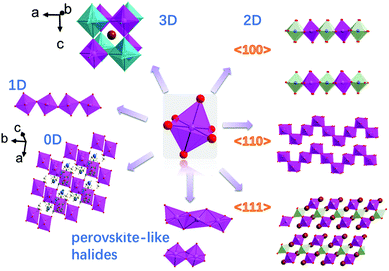https://onlinelibrary.wiley.com/doi/abs/10.1002/adom.201801435

The halide double perovskite family represented by A2(B+,B3+)X6 can overcome the lead toxicity and enable generally large band gap engineering via B/B sites’ transmutation or exotic dopants to fulfill the emerging applications in the optoelectronic fields. Herein, the design and the experimental synthesis of a new family of Mn2+-doped Cs2NaBi1-xInxCl6 crystals with an intense orange-yellow emission band are reported, and the phase formation stability is discussed via a combined experimental–theoretical approach. Depending on the manipulation of Bi3+/In3+ combination, the band gap increases with In3+ content, and a subsequent evolution from indirect to direct band gap is verified. First-principles calculations and parity analyses indicate a parity forbidden effect on Cs2NaInCl6, and a combination effect of absorption on Cs2NaBi1-xInxCl6 from both Cs2NaBiCl6 and Cs2NaInCl6. The associated Mn2+-doped photoluminescence depending on the Bi3+/In3+ substitution is also addressed from the variation of the different Mn–Cl environment and neighboring-cation effect.







